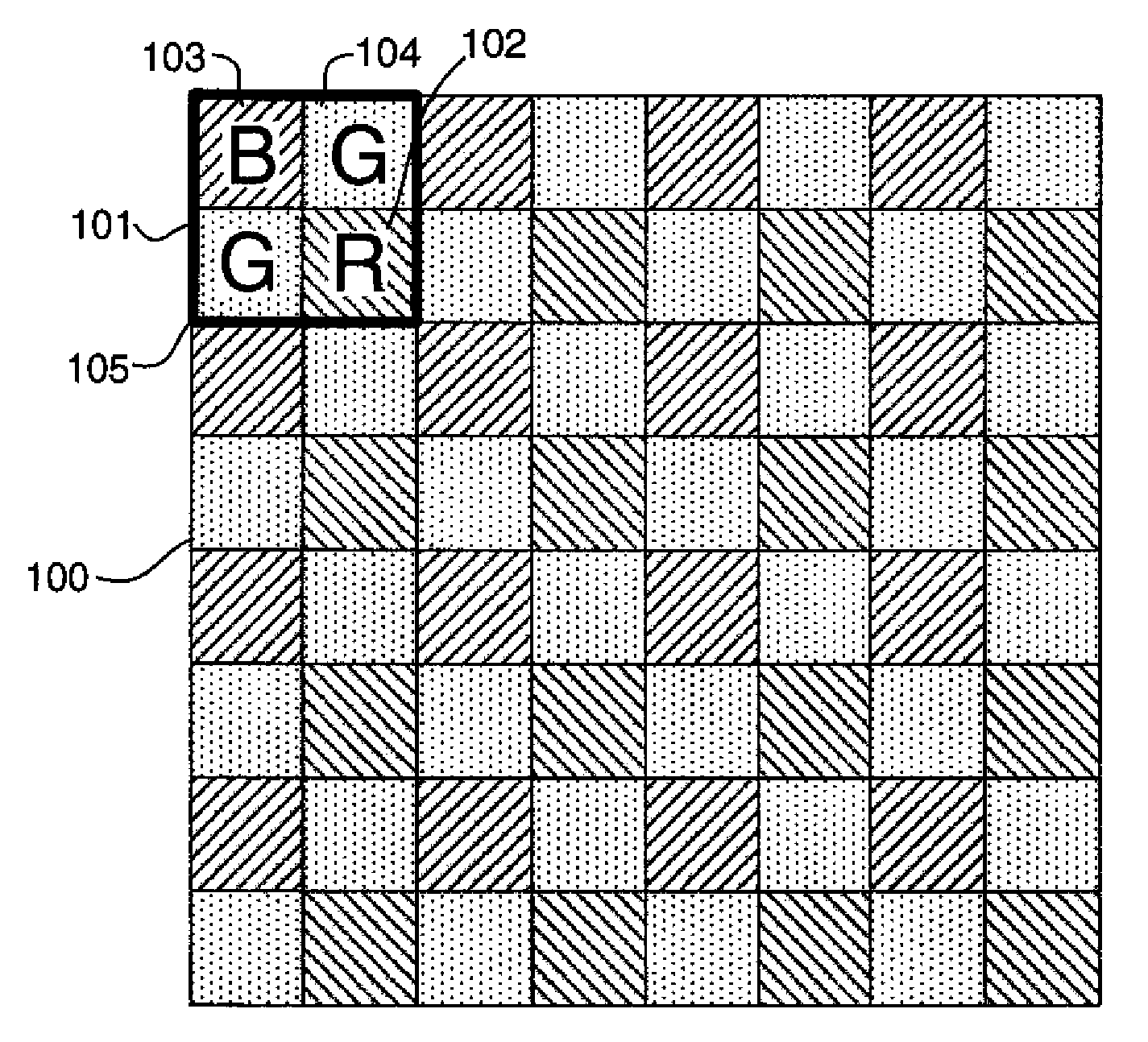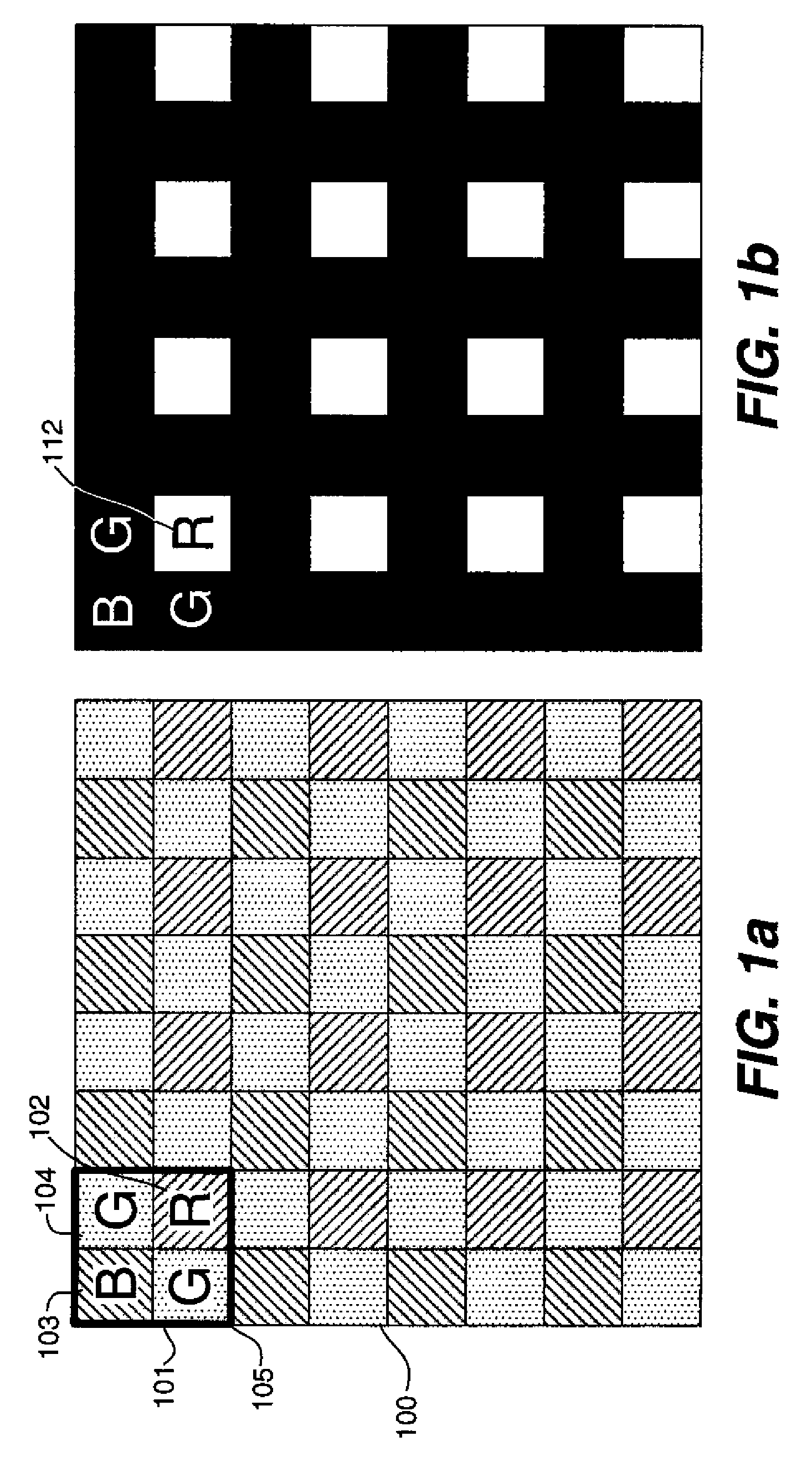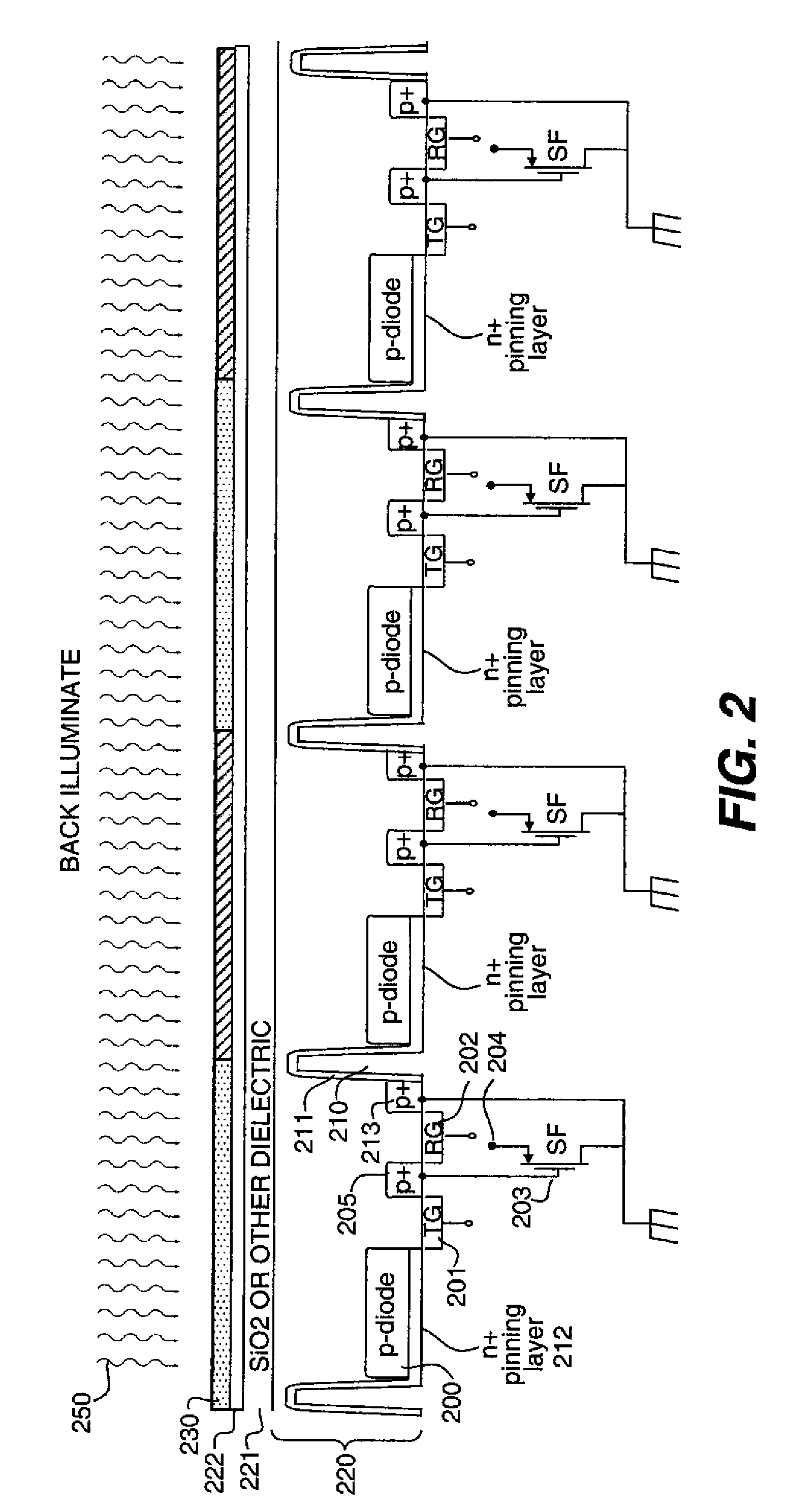Image sensors having gratings for color separation
a color separation and image sensor technology, applied in the field of image sensors, can solve the problems of destructively destroying affecting the other pixels within the color kernel, so as to improve the color crosstalk and increase the qe
- Summary
- Abstract
- Description
- Claims
- Application Information
AI Technical Summary
Benefits of technology
Problems solved by technology
Method used
Image
Examples
Embodiment Construction
[0031]An optical path as defined herein is:
optical path=n×d, (Eq. 1)
where n is the index of refraction and d is the thickness of the material through which the light is passing.
[0032]Turning now to FIG. 7, there is shown a portion of an image sensor array 401 of an image sensor of the first embodiment of the present invention. It is noted that, although the cross section only shows four pixels for simplicity, the image sensor array 401 typically includes thousands or millions of pixels. It is further noted that the image sensor array 401 is typically a part of an active pixel sensor as will be discussed in FIG. 19. Referring back to FIG. 7, the image sensor array 401 includes a plurality of pixels 301 and 302 disposed in an active layer 420. The pixels 301 and 302 are preferably grouped together in a 2×2 array, hereinafter a color kernel, that repeats over the array as will be described in detail hereinbelow. Although a 2×2 array is preferred, other color kernel sizes may also be ...
PUM
 Login to View More
Login to View More Abstract
Description
Claims
Application Information
 Login to View More
Login to View More - R&D
- Intellectual Property
- Life Sciences
- Materials
- Tech Scout
- Unparalleled Data Quality
- Higher Quality Content
- 60% Fewer Hallucinations
Browse by: Latest US Patents, China's latest patents, Technical Efficacy Thesaurus, Application Domain, Technology Topic, Popular Technical Reports.
© 2025 PatSnap. All rights reserved.Legal|Privacy policy|Modern Slavery Act Transparency Statement|Sitemap|About US| Contact US: help@patsnap.com



